The End of the World is Nigh : The History of Cape Horn
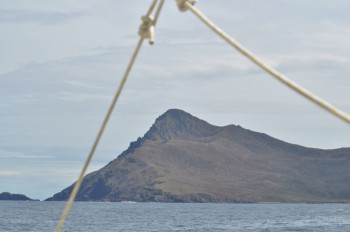
The wind blew hard from the south-west, driving up great waves. Not since they left the northern hemisphere had the ship ridden seas this big – but far from being afraid or dismayed her captain was ecstatic. During the months that she had spent on the coast which we now know as Argentina the Endracht had seen plenty of strong winds, but always before the adjacent land had provided a lee. Now, evidently, there was no lee, or else how could the waves be so enormous? And if there was no lee…
“We held for certain that it was the great South Sea,” Captain Schouten wrote in his logbook, “and we were exceedingly glad to to think that we had discovered a way, which until that time was unknown to men.”
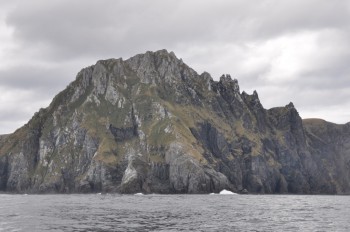
As it happens, Schouten was both right and wrong. At this stage the little Dutch ship was only passing through the strait which is now named after the expedition’s principal backer – the Le Maire Strait – and they found themselves having to press on to the south. But four days later, on 29th January 1616, the sailors saw land lying to the north-west, and they knew that it could only be “the land that lay south from the Straits of Magellan, all high and hilly and covered over with snow and ending in a sharp point”.
Continuing westward and then altering course to close the cost again, they became the first Europeans to round the southernmost tip of South America – or at any rate, they became the first to round it by intention.
Schouten and his fellow business men were intent on getting to the East Indies, and more specifically to the islands that we now know as Indonesia, but since the Dutch East India Company had a monopoly over the route through the Straits and also over the passage round the Cape of Good Hope – and since Le Maire, having been the founding director of this company, had now quarrelled with the organisation – they had to find another way. Of course, if the Company had known that another route existed then they would have bribed the Crown to give them a monopoly over that, too… but they didn’t, and so Le Maire and Schouten decided to take a gamble. Some 40 years earlier the English privateer, Sir Francis Drake had described how his ship, having passed through the Straits of Magellan, was blown to the south in a most violent storm until, eventually, after the wind abated, he and his men could see “the uttermost cape or headland of these islands.” He even claimed to have gone ashore – but was it really true, or was it just pub talk?
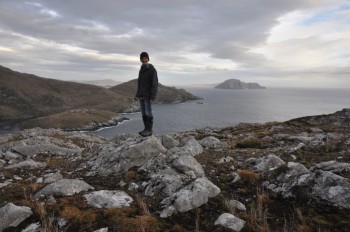
When they embarked on this project the Dutch merchants had been sailing aboard two ships, but the bigger of the two had been lost, due to a careless accident, while they were careening in Puerto Deseado. Eager to pay tribute to the people who had helped to finance the expedition, Schouten and Le Maire had named that ship for the town whence they all came, and having lost the vessel he now gave the same appellation to this most significant landmark: it was named Hoorn.
And as it was then, so it is today, for the title was well earned. The passage to the south of the cape is named for Drake, but it was the Dutch who put Cape Horn on the chart.
On 29th January 2016 the infamous cape will have been known to the world for 400 years. Its discovery changed the balance of politics in the world, for it broke not only the monopoly of the Dutch East India company but also undermined Spanish control of this region. Now, Dutch and English merchantmen could avoid running the gamut of the Papist powers which might lurk on the shores of Tierra del Fuego. From now on they would now take their chances with the Southern Ocean – but whether the weather was any kinder than the Spanish is a matter of considerable doubt.
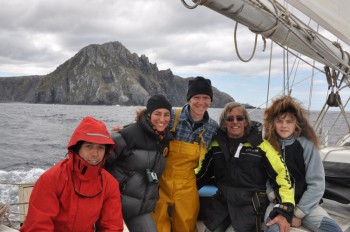
Over the course of the next 300 years countless ships sailed around the Horn. Until the late years of the 19th century it was the considered to be the least hazardous, if not the only way to travel from the one coast of the United States of America to the other, and it was also the route for traders gathering fertiliser on the coast of South America and for clipper ships bringing wool, wheat, and gold from Australia and tea from India. However, safe as it might be considered in comparison to finding a way through the Bad Lands and fighting the Sioux, a passage around Cape Horn was no a sunshine cruise. Just as the ships which have passed this way are beyond number, so too are those who have been swallowed up by the storms and the mountainous waves which they create. With typical irreverence, English sailors sang shanties which almost demean the place: “Were you ever off the Horn, where it’s always fine and warm? … Hey-ho, and a way we go, donkey riding, donkey riding…”. Those sailors who survived the passage earned the right to wear a gold hoop in the ear which had brushed past the notorious rock – although, truth to tell, most of them never even saw it, as their captains were inclined to take their ships past in the open water far to the south.
With the opening of the Panama Canal, in 1914, the route around Cape Horn became a proverbial backwater – although that metaphor is actually hardly appropriate for a place where the waves can stand 150ft tall and might extend, from one foaming crest to the next, for a couple of hundred yards… Nowadays it is generally only ships too big to fit in the enormous locks of the Canal which go round the Horn. Mega-ships – and yachts.
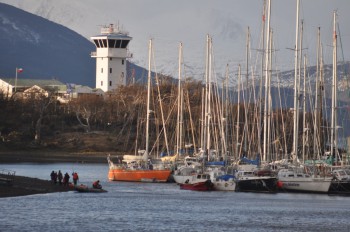
Not everybody likes travelling along a man-made ditch… and besides, if you skip the Horn then you’ve probably also skipped Argentina, with its extraordinary desolate coast, and Chile, with its stunning glaciers and its amazing maze of natural canals and isolated islands. It’s true that you can pass this way and still skip the Horn. You can go through the Magellan Straits, or you can cut through the Beagle Canal and ignore the fact that the Cape is only about 50 miles to the south… but for most who have come this far, it beckons.
The first yacht to round Cape Horn was Slocum’s Spray – but, like Drake, Slocum came here only because the winds carried him south while he was trying to go north. He travelled through the Magellan Straits and then got blown backwards, so to speak, down to the vicinity of the Cape; so it doesn’t count.
The first yachtsman to sail his boat south with the deliberate intention of rounding the Horn was Conor O’Brien, the Irish gun-runner, and to him goes the honour. To judge from his writings, he was a miserable sod, but that’s by the by. His passage was made during a round the world journey which began in 1923 and ended in ’25.
The first to sail single-handed round the Cape by intention was the Argentinian sailor, Vito Dumas. He passed this way in 1942, also as part of a world-girdling voyage.
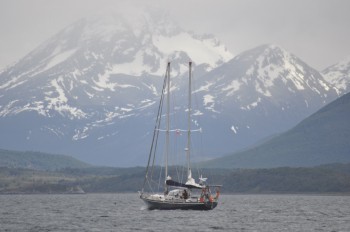
As ever, it took time for the idea to catch on, but once the yachting community understood that Cape Horn was fearful but not impossible there was no stopping the daredevils who wanted to test their mettle or add the achievement to their CV. There are now races which can accommodate the needs of these fine folk – and for those who can’t raise the sponsorship money for an Open 60 and who aren’t able to win a bunk aboard a Volvo Ocean 65 there’s always the option of going round in your own tub.
Each year, another yachtsman joins the ranks of the bona fide Cape Horners – the sailors who have travelled around the Horn on a voyage of not less than 3,000 miles – but many more, each year, do the much less daring but also very satisfying thing, of popping out from the Beagle Channel when the window of opportunity arises and making a quick fair weather passage around the famous rock.
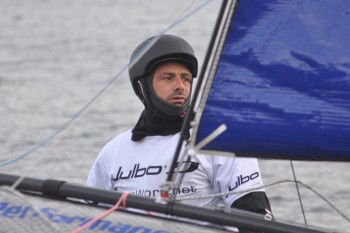
A couple of weeks ago the French America’s Cup skipper, Franck Cammas, went round on a thing which looked more like floating bed than a boat. Accustomed to sailing the kind of catamaran which can take him round the world in only 47 days, Cammas made a perfectly safe and very speedy rounding of Cape Horn aboard the Nacra sailing dinghy, but a week later, while sailing the more familiar and mightier machine in his home waters, he fell overboard and damaged his leg so very badly that there was talk of amputation. So, you see, Cape Horn is not necessarily the most dangerous place in the world!
On the anniversary of Captain Schouten’s discovery of Cape Horn the Chileans, who own the rock, will be celebrating with a ‘parade of sail’. Previous such parades have seen a flotilla of ships circling the island – for, as Schouten failed to note (but Drake accurately described) it is not actually a part of the continent; it is merely the most southerly of a cluster of islands. When the weather plays the game this archipelago makes an excellent cruising ground, and our next article will describe Mollymawk‘s travels here.

Very interesting, I’ve just been reading a probably fictitious account of windjammer rounding the horn by Jack London, It does make me want to go. Looking forward to your account.